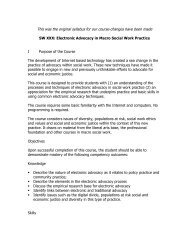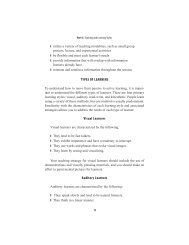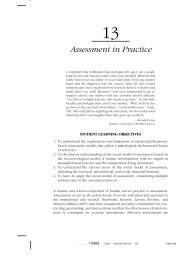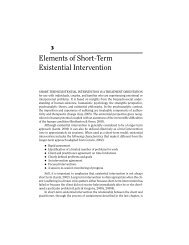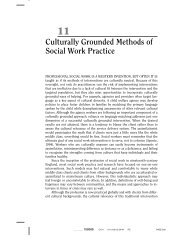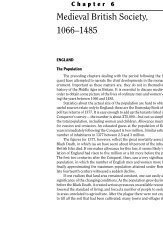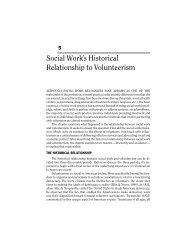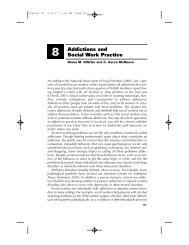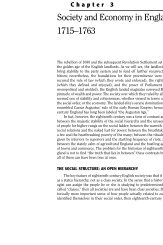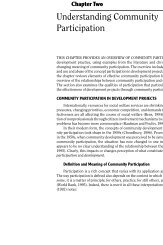Chapter 2 Self-Awareness, Critical Reflectivity, and ... - Lyceum Books
Chapter 2 Self-Awareness, Critical Reflectivity, and ... - Lyceum Books
Chapter 2 Self-Awareness, Critical Reflectivity, and ... - Lyceum Books
Create successful ePaper yourself
Turn your PDF publications into a flip-book with our unique Google optimized e-Paper software.
<strong>Chapter</strong> 02 2/11/08 12:10 PM Page 31<br />
<strong>Self</strong>-<strong>Awareness</strong>, <strong>Critical</strong> <strong>Reflectivity</strong>, <strong>and</strong> Identity 31<br />
During reintegration, the third stage of phase 1, people have acknowledged<br />
their white identity but assume that the social structures that privilege them<br />
<strong>and</strong> disadvantage others are part of a natural order. During this stage, people selectively<br />
process or reinterpret the world around them to align with the social<br />
mores that encourage stereotypes of people.They often minimize or deny similarities<br />
that they observe between people who are white <strong>and</strong> people of color.<br />
During pseudo-independence, the first stage of the second phase, the individual<br />
begins the formation of a positive white identity, engaging in an intellectual<br />
process in an effort to make sense of what she or he has learned.Assumptions,<br />
including notions of superiority <strong>and</strong> inferiority based on race, are<br />
questioned in earnest.The person begins to acknowledge that she or he has a<br />
responsibility to help dismantle the system of oppression of people of color.Yet<br />
people at this stage may still behave in ways that inadvertently maintain the status<br />
quo.They may now see people of color as victims but may also believe that<br />
the solution to the problem is to help people of color adopt the culture of the<br />
white dominant society.They do not yet see racial differences as viable alternative<br />
ways of being.They still measure all people against the white ideal. During<br />
this stage, the motives of individuals who are earnest about developing a positive<br />
white racial identity may be questioned by the racial groups they are trying<br />
to champion <strong>and</strong> may be viewed with suspicion by family members or other<br />
people they know who are white.Those who are encouraged to continue the<br />
campaign against race-based social injustice are well on their way to developing<br />
a racial identity that no longer privileges whiteness <strong>and</strong> marginalizes people<br />
of color.<br />
Immersion/emersion is the period during which people develop a strong<br />
commitment to the development of a positive white racial identity, <strong>and</strong> to replacing<br />
myths <strong>and</strong> stereotypes about whiteness <strong>and</strong> people of color with accurate<br />
information. The questions that are asked at this stage are “Who am I<br />
racially?”“Who do I want to be?” <strong>and</strong> “Who are you really?” People often facilitate<br />
this journey by reading about others who are white who have engaged in<br />
racial identity struggles or by participating in white consciousness-raising<br />
groups that are committed to addressing racial injustice. At this stage, individuals<br />
no longer see people of color as needing to be fixed.They fully accept the<br />
need for people who are white to play an integral role in the change process.<br />
Autonomy, the final stage, describes the internalization of a new definition<br />
of whiteness <strong>and</strong> a commitment to nurture this identity.The person is now committed<br />
to eliminating oppressive behaviors; she or he no longer vilifies or pays<br />
tribute to others based on their group membership. While developing an autonomous<br />
racial identity, the person also seeks out opportunities to engage<br />
with members of other racial <strong>and</strong> cultural groups.This final stage of white racial<br />
identity does not represent the end of racial identity development, but a new<br />
beginning that must be nurtured, encouraged, <strong>and</strong> respected.This stage marks<br />
the individual’s acceptance that this is an ongoing process requiring openness<br />
to new information <strong>and</strong> different worldviews.Tatum (1994) describes the final



